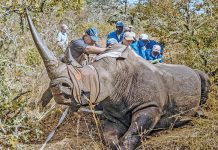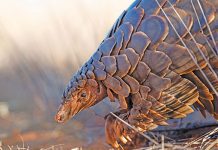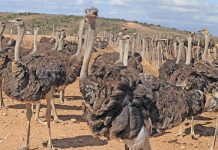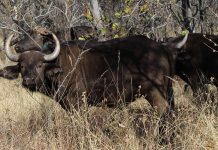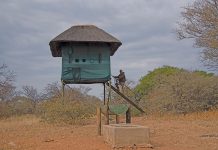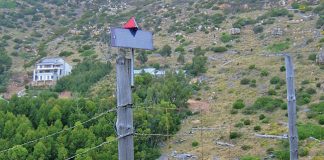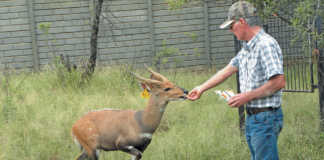Parasite control in wildlife has long been a contentious issue among farmers, nature conservationists and animal health professionals. But according to Professor Ivan Horak of the University of Pretoria’s Onderstepoort campus, it’s an issue overbearing humans have created for themselves.
At the recent Dung Beetles for Africa workshop on sustainable parasite management, held on 16 and 17 July at the University of Pretoria, Horak suggested that a better understanding and appreciation of the role of parasites will improve the management of wildlife. Simply put, Horak claims there’s no need to control parasites in wildlife. He gave a number of examples illustrating what humans are doing wrong.
Forget traditional remedies
Horak finds typical remedies for wildlife ticks ineffective. “Aloes don’t work. Some 60% of the ticks may be gone, but by then your animals have lost 30% of their weight and have diarrhoea like you can’t believe,” says Horak. “It doesn’t work.” “Fire doesn’t work.
We’ve done a number of experiments with fire at various burning intervals and at various places. Sometimes you get a reduction of 50%. Other times, after the fire removes the top grass, you’ve exposed the eggs to the heat and you end up with more ticks than you started with.”
Healthy tick burdens
Horak explains that it’s normal for healthy wild animals to harbour thousands of parasites, be infected by a range of parasite species, or both. “For instance, the normal tick load for a buffalo is 50 000 ticks and they can have up to two million worms. Healthy blue wildebeest in the Kruger National Park can harbour nearly 35 parasite species including 18 worm species, three lice species, seven tick species and any number of mite species.” Within a species, the different sexes can harbour different amounts of parasites. Horak used the example of male and female kudu, examined in pairs over a twoyear period, and male and female nyala, examined in pairs over 18 months. “With the kudu we noticed the males had 10 times as many heartwater ticks as the females, and five times more brown ear ticks.
“The nyalas are too small to carry large numbers of parasites, so neither the males nor the females had many,” says Horak. “But the males had three times as many blue ticks as the females. In the case of the brown ear tick, it’s absolutely amazing that male animals, in a test group of 24, had an average of 345 ticks, while on average the females had seven. The reason? One of them is that nyalas have the greatest degree of sexual dimorphism in any antelope species. The males look completely different from the females and there is a huge difference in weight – ticks go for bigger animals.”
It was found the male nyalas could carry 1 000 ticks in their ears at a time while females carry up to 300 ticks. “If we look at impala males examined near the Crocodile Bridge in the Kruger National Park,” says Horak, “the males had a total of 1 400 ticks in January, 2 000 in February, 1 400 in March and 7 000 in April. But in May they had 22 000 – here we have a problem. The males are mating, they’re chasing all the other males around, they have no time to feed, no time to groom and they’re running after females all the time, so their immune systems are badly compromised. The result is this huge tick burden on the males. After this period the tick numbers drop.”
Hosts for immature ticks
There are 85 tick species in South Africa, of which 18 are obligate parasites of rodents, elephant shrews, shrub hares and birds. “The elephant shrews are very interesting,” says Horak. “We’ve got four paralysis-inducing ticks in South Africa and the shrews are the hosts for the immature stages of three of them, so we don’t know if the tick produces the toxin in its saliva or whether the shrew’s blood is toxic. I think it’s the tick’s saliva. “The shrews can carry up to 800 immature ticks. Scrub hares are also the hosts of up to 30 tick species. Guinea fowl make excellent hosts with tick burdens of a couple of thousand. But remember these are immature ticks, so you’re unlikely to see them.”
Natural resistance
Horak points out that we do have naturally tick-resistant animals. “In the Kruger National Park we examined a number of animals, including mountain zebras, which averaged 3 000 ticks, kudus averaging 4 000 ticks, and impalas averaging 4 200. Now, for an animal the size of an impala that’s an exorbitant amount of ticks – as we’ve said, the larger the host the more ticks it will carry. An impala is one third or one quarter the size of a kudu and look at the number of ticks it carries.”
The difference, according to Horak, is that an impala has a grooming apparatus: its lower jaw is loose, and it uses it to groom itself. While it’s possible that in this particular case the grooming apparatus wasn’t working, it could also be that impalas don’t develop an immunity to ticks because they rely on their grooming apparatus instead.
The role of parasites
Horak says that as soon as an animal’s immune system becomes compromised, either through injury or old age, that animal will be overrun with external and probably internal parasites. Such an animal should be removed, either by predators or human intervention. “Parasites have a very important role in large ecosystems where large animals, before they are 18 months old, develop heavy tick, worm or lice burdens,” says Horak.
“Those that are weaker or don’t develop a proper immune response are made even weaker by the parasites, and are then taken out by predators before they can contribute to the gene pool.” This is what is happening in large ecosystems like the Kruger National Park and other big parks. “Diseased or injured animals become heavily infected, resulting in rapid removal by predators. Between parasites and predators the population is being screened for fitness all the time. So, a constant low-level of parasites is keeping weak youngsters out of the gene pool. The predators, which really aren’t very noble animals, take out the weakest link,” he says.
Human interference
Horak explains that the role of parasites is to protect the environment against “intruders, farmers, game reserve managers and nature conservationists”. He adds that, “Nature conservationists in the Free State put gemsbok in the Twee Rivieren Game Reserve. What happened? The Karoo paralysis tick wipes the gemsbok out, because the gemsbok aren’t supposed to be there.
The same thing happened when farmers put gemsbok in Limpopo. It was the wrong area for gemsbok, the brown ear tick took them out and they died. “Blue wildebeest [were brought into] the Fish River Valley, and the first time they came along, the mange mite took them out,” says Horak. He says parasites are there to protect the environment against foreign intruders and “against people who want to shove in foreign intruders where they aren’t supposed to be”.
Where we go wrong
Horak has an idea of what we’ve been doing wrong. “We’ve overstocked. We put too many animals in too small habitats and consequently there’s no way to escape either worms or ticks. We fence, which is the same as overstocking, particularly in the case of animals like eland. They’re supposed to walk between 8km and 20km a day, to put them in a 1 000ha camp is crazy.
You shouldn’t keep eland in anything under 20 000ha reserves – it’s wrong.” He adds that the introduction of foreign species is equally detrimental, “Like the gemsbok projects: put them in where they don’t belong and they become tick taxis.” A lack of predators is a contributing factor according to Horak, “There should be predators, but because they compete with humans for protein, what have we done? We got rid of them. And we’re too stupid to fill their ‘shoes’. We go on a hunt and we shoot the kudu with the biggest horns. We don’t shoot the weakest ones. No, we say, ‘leave it, it’ll grow’. It’s not going to grow. Resistance to ticks is 70% heritable.
Leave that animal there and it will breed more tick-susceptible animals. “The hunter is entitled to what he’s paid for. But if you spot a sick animal, shoot it and leave it,” Horak says. “It won’t cost you anything. The predators will take it apart or [you can] just leave it.” For more information contact the Faculty of Veterinary Science at Onderstepoort on (012) 529 8000.

